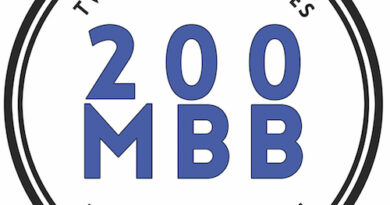Indoor touring
During the several decades I spent writing for Motorcycle Consumer News before its demise in early 2020, I occasionally devoted my monthly column to a rant about some form of unconscionably bad service I’d suffered at a dealership. A few general categories from memory include the following.
Sales staff with obviously no knowledge of, or interest in, motorcycles. These were sometimes ex-car salesmen who embodied the most obnoxious stereotypes of that occupation. Other times, they were friends or relatives of management—or just kids off the street—who needed a (no doubt low-paying) job. I would have gone into the dealership with questions about a new model, only to discover I already knew far more about it than the salesperson I was querying. In one particularly memorable instance, the salesman wasn’t even aware of the bike in question’s existence, despite it being displayed prominently near the showroom’s front door and on the cover of the magazine for sale at the counter upon which he was leaning. I’m especially weary of urgent prods to buy immediately because hordes of other customers have been looking at the same machine with intense interest; don’t let this once-in-a-lifetime opportunity get away! If that’s not simply a lie and the bike really hasn’t yet sold in the face of overwhelming demand, what does that imply about this dealership? All those feverish buyers must have found better deals elsewhere.

Parts department staff extolling the virtues of accessories they don’t understand. They might try to hard-sell an item, referring authoritatively to “super-awesome” features they can’t coherently explain when questioned—the customer should just trust them based on their presentation of absolute confidence and confused/confusing terminology. Or the person behind the counter may have no idea what purpose an item actually serves or how it works—despite all this information being clearly printed and illustrated on the package sitting right there on the shelf next to them. You’d think maybe they’d have gotten bored enough to glance at said info instead of just sitting there staring blankly, which is all they’d done the whole time I wandered around the (not surprisingly) empty shop.
Listen to this column as Episode 29 of The Ride Inside with Mark Barnes. Submit your questions to Mark for the podcast by emailing [email protected].. (Audio available from 25 July 2023; until then it will display “Unable to load media.”)
Years ago, I would bristle at arrogant buffoonery and insulting pressure tactics by pointing out glaring, easily disproven misinformation, and I’d provide evidence I didn’t need anyone to lazily read the details on a label to me out loud. Now I don’t waste my time, having concluded there’s no way to shame a shameless person. I’ve also found it impossible to sympathize with parts staff’s offhand complaints about people purchasing online when their store charges vastly higher prices for items they still have to order because they keep almost nothing in stock. Who wants to pay more and make two trips when they can get something much cheaper without ever leaving home? On too many occasions that second trip has yielded the discovery a third will be necessary, since someone forgot to place the order, ordered the wrong thing, or failed to let me know it was backordered. I’ll gladly pay more to support a local brick-and-mortar retailer if they give me just one reason (e.g., I can examine the item in person, take it home today, or get good advice about my options), but they’ve often failed to do so.

Service department staff who attempt to cover up gross incompetence with assertions that assume I’m an idiot, or at least profoundly ignorant. My all-time favorite here was a mechanic called to the showroom in response to my concern about an expanding puddle of oil beneath a used motorcycle I’d considered purchasing. After a moment crouching beside it, he reassured me the oil had simply “leaked from the filler cap” and was nothing to worry about. I’d already examined the motor, which had no tell-tale trail of lubricant near its filler cap, but definitely did have a clearly visible rivulet running from the countershaft seal to the low point on the case, where it was about to drip some more. Guess how tightly the chain had been adjusted. Besides, if that oil had actually come from the fill hole, it would mean either the crankcase had been overfilled to a catastrophic degree, or it had been topped off (on the showroom floor!) by someone so careless they didn’t notice extensive spillage in plain view of potential buyers. Neither of these possibilities struck me as “nothing to worry about.”

Over the years, I’ve heard countless horror stories about fellow riders’ dealership nightmares. I’ve also enjoyed fantastically knowledgeable, generously patient, and pricelessly helpful education and service from dealership staff who displayed impeccable integrity and were unmistakably kindred enthusiasts, and heard plenty of stories of this sort from others, too. As in any market segment, there are well run motorcycle dealerships, with creative and sincere efforts to engage their customer base in win-win transactions, and other operations that have no interest in the people who enter their front door (or work for them) beyond extracting maximum profit for minimum, or even nefarious, effort. Because MCN focused on motorcyclists as consumers, I often emphasized our responsibility to vote for good dealerships with our wallets, and—whenever possible—to avoid enabling bad behavior by lining the pockets of lousy dealers. This principle remains valid, but I’m not beating that drum right now.
Instead, I’m feeling deeply grateful for something a dealer can provide in addition to the sale and service of motorcycles or associated parts and gear. You see, the winter weather here has been especially abysmal lately, and I’ve grown desperate for some form of motorcycle-related stimulation. I’m not quite to the point where I’d voluntarily subject myself to 40-degree rain, so riding is out. I’ve watched so many motorcycling YouTube videos my eyes are starting to cross. All my bikes are polished and serviced, with no mechanical projects to start or complete. I’ve talked about motorcycles at length with riding buddies, commiserating about our shared cabin fever. What else is there?! Finally, one of those conversations hatched the idea of visiting our local (multi-line) BMW dealership, as we’d heard they’d just received—quite literally—tons of bikes for the new model year. Enough said; we drove there immediately.
Indeed, more motorcycles were packed into that huge showroom than I’d ever seen there before, and the large accessory and apparel area was piled high with big cartons of new kit waiting to go on the racks and shelves. This dealership is well prepared for the usual spring rush coming in a month or two. Although neither my friend nor I were in the market for a new bike or needed any gear, we spent hours poring over all this stock, studying details and prices, learning about the latest technical features and colorways, and forming opinions that had no apparent relevance to anything currently visible on our respective purchasing horizons. We might as well have been in a museum, rather than a retail establishment. Just being around all this stuff was immensely entertaining—for free! It was an afternoon well spent without spending a dime.
Unlike a museum, however, this showplace will sell us its exhibits in the future. While we had no immediate needs, seeds were planted, and we were both tempted to buy things just because they held novel appeal in the moment. Some of those seeds will eventually grow and bear fruit in the form of tangible purchases, but perhaps even more importantly, this experience increased our positive emotional associations to this place of business. Aside from any specific item we saw for sale, we’ll be more likely to visit this dealer when we do need something, and we’ll be quicker to stop in on a whim, even when we don’t. (I can’t count the times I’ve left a motorcycle shop with something I’d moments earlier not realized I couldn’t live without.) Good dealerships somehow make us want to buy something—anything—independent of the thing, itself. It’s like cheering on a favorite team or wearing a shirt emblazoned with the logo of an admired marque or organization. We naturally identify with people, places, and things that instill good feelings in us and we’re inclined to interact with them more.
In this case, the good feelings came from seeing a multitude of interesting new designs and well-crafted hardware. We had minimal exchanges with dealership staff and appreciated their willingness to let us peruse their wares in peace, excitedly geeking out sans assistance or sales pitches. Previous experience had taught us such personnel would be helpful if needed; we simply lacked any need on this occasion. The dealership scored big points on the basis of its staggering inventory alone. At other times, I’ve spent just as long and been equally enthralled in dealerships with far less on display—not because they were poorly stocked, but because their collections were meticulously curated, with virtually every item on offer an eye-catching, intriguing piece of high-quality equipment. Such boutique dealerships may only sell one or two brands of motorcycle, yet they can create a richly distinguished atmosphere when their staffs have a commensurate depth of expertise and treat customers with equally special handling. Size isn’t all that matters.
Going beyond the provision of excellent goods and services, the best dealerships capitalize on the social dimension so vitally important in our avocation. Dedicating space for riders to hang out (with good coffee and snacks, please!), hosting entertainment events and club meetings, or regularly providing classes on riding techniques and wrenching procedures can greatly fortify the connection between a community of riders and a business that depends on their patronage to survive—and ultimately thrive. It can be a mutually gratifying relationship, rather than one that primarily benefits the seller at the (coerced, neglected, or deceived) buyer’s expense.
When a dealership clearly demonstrates a love for motorcycles, motorcycling, and motorcyclists, they don’t just deserve our hard-earned cash—we enjoy giving it to them and look for excuses to do so. I’m not a businessman, but surely this is an enviable position in the marketplace. Also, a dealership that selects its staff carefully and then treats them well ensures good customer service. I don’t know why there aren’t more dealerships like this out there, but I assume it’s fundamentally a matter of supply and demand. When someone who doesn’t really care can set up shop and make money off of us because there’s little competition, they’ll do so. Those who live near a crappy dealer may only be able to improve the situation by taking their business elsewhere, and encouraging fellow riders to do the same, even if it means traveling to the next town. I guess I really am still preaching the MCN sermon, but it’s a worthy theme for every riding congregation.
Mark Barnes is a clinical psychologist and motojournalist. To read more of his writings, check out his book Why We Ride: A Psychologist Explains the Motorcyclist’s Mind and the Love Affair Between Rider, Bike and Road, currently available in paperback through Amazon and other retailers.



